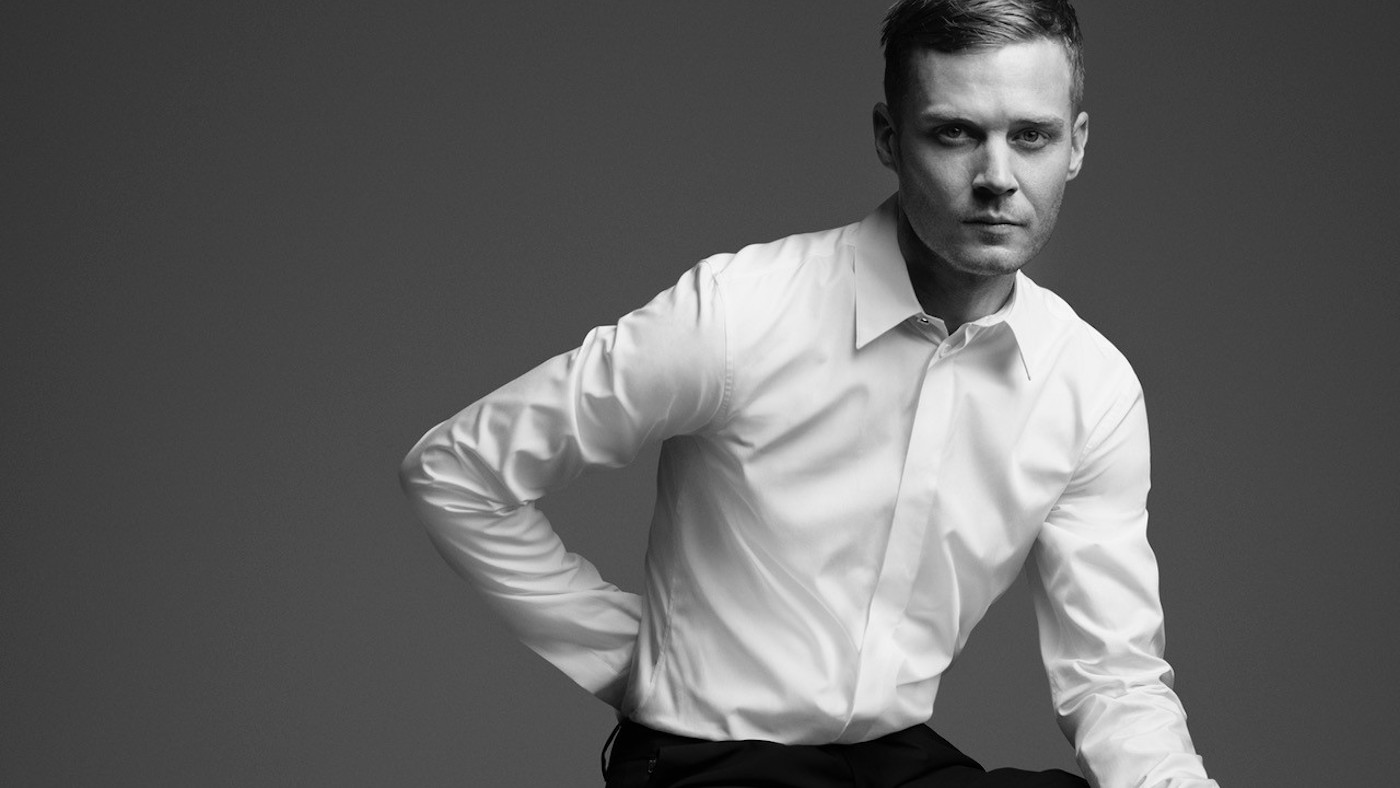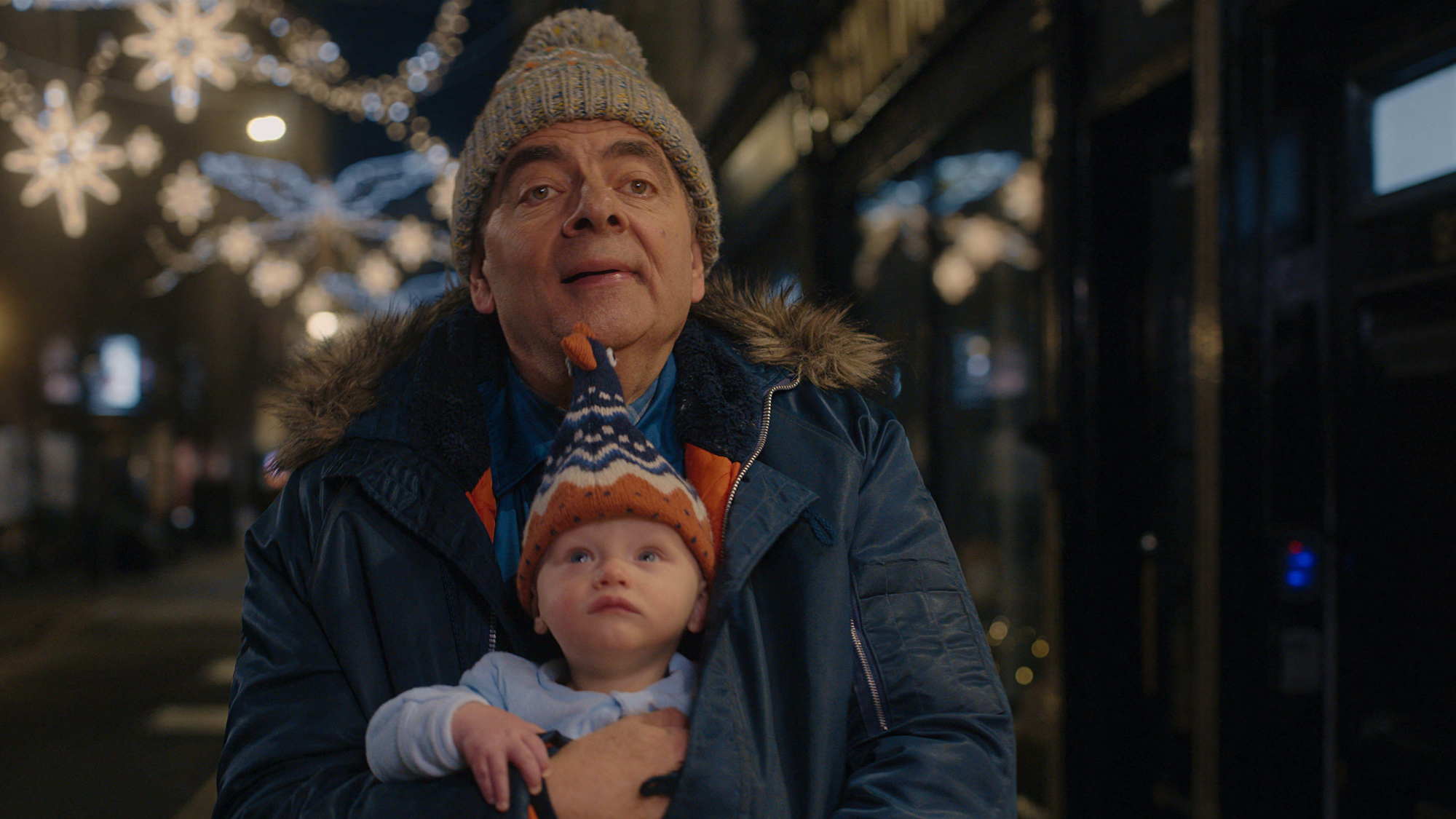Matthew M. Williams: a serial collaborator
At Moncler, the American fashion designer weaves his signature codes with a flair for the unexpected

He is busy. “And then with Remo,” said Matthew M. Williams, referring to Remo Ruffini, since 2003 the CEO and chairman of Moncler. “He saw my first show, and he saw the kind of luxury technical element that existed in it… there were definitely some things that spoke to mountains, to mountaineering.” On the phone from Paris, Williams is detailing a list of creative collaborations he has taken part in.
To date, the American designer has teamed up with brands including Nike, Mackintosh, Vans and Bang & Olufsen. In Paris last June, he was appointed artistic director of Givenchy. There, at the legacy name’s ateliers, Williams is now in charge of both womenswear and menswear, following in the footsteps of designers Alexander McQueen, Riccardo Tisci and Clare Waight Keller, all of whom have counted among the heirs of founding couturier Hubert de Givenchy.
But back to Moncler. He called to talk about his alliance with the Italian luxury label, which was originally initiated when Ruffini reached out directly, following a presentation of Alyx, the fashion house Williams co-founded in 2015 and christened the hieroglyphic 1017 Alyx 9SM. “There aren’t many people in the world that are like him, able to culminate such an industry-defining vision as he has,” Williams said. “Remo is really aware of what is going on. He is an inspiration as somebody who is part of all aspects of the process.”
The Week
Escape your echo chamber. Get the facts behind the news, plus analysis from multiple perspectives.

Sign up for The Week's Free Newsletters
From our morning news briefing to a weekly Good News Newsletter, get the best of The Week delivered directly to your inbox.
From our morning news briefing to a weekly Good News Newsletter, get the best of The Week delivered directly to your inbox.
‘Everyone wears Moncler in Italy’
Williams made his Moncler debut with the autumn/winter 2019 season, as part of the brand’s Genius project. Introduced in February 2018, with Moncler Genius, Ruffini seasonally extends carte blanche to a group of design talents cherry-picked from around the world. Pierpaolo Piccioli of Valentino, Craig Green, Jonathan Anderson, Noir’s Kei Ninomiya and Fragment’s Hiroshi Fujiwara have all previously put their spin on Moncler’s signature shapes and fabrications. Chief among them are quilted, textured materials used mostly for outerwear that is cloud-like to the touch yet insulating. Moncler first devised quilted jackets as protective garments adopted by workers bracing the elements of the French Alps. Moncler was founded at the foot of mountains, in Grenoble, in 1952.
He had long been aware of Moncler but it was when Williams moved to northern Italy in 2017 – a relocation that allowed him to be closer to Alyx’s manufacturers – that the designer realised “how much of an institution” Moncler was. “Everyone wears Moncler in Italy. Every age group.”
On a quest for sustainable practices and transparency, Williams had previously fashioned Alyx garments from recycled cloths, some dyed without the use of water. Embedding blockchain technology, in 2019 Williams piloted Alyx clothing tags fitted with a QR Code; once scanned, products’ biographies were on view, from raw material to factory and finally shop floor.
A free daily email with the biggest news stories of the day – and the best features from TheWeek.com
Anchored in the brand’s long standing expertise, Williams’s trio of Moncler collections have to date been equally agenda-setting. Cut from Econyl, a material forged from recycled fishing wire, base-layer leggings have been assembled via seamless-knitting, a technique that leaves near to no waste. The fabric of T-shirts comes from recovered textile waste, the seams of outerwear have been joined using ultrasonic welding instead of sewing and the lining of a group of Moncler’s mascot-like down jackets has been cut from a semi-transparent fabric, laying bare the garment’s make-up.
And above all, Williams’s Moncler is also wearable. Because, as varied and prolific as his work may be, it’s a joy of dressing, of wearing clothes that have been designed and realised with intent, that sits at the heart of all of Williams’s work. “It’s important that I believe in what I am doing, and wear the clothing,” he said, when I asked whether he designs for himself first. “I think that if I love it, if I am interested in wearing it, then probably other people will feel the same. I mean, I’ve never wanted to design clothes that I didn’t want to wear.”
‘Whoa, this is fashion’
Born in Chicago, Illinois, Williams was raised in Pismo Beach, a small seaside city in California, known for its proliferation of both beaches and monarch butterflies. Growing up, he recalls clothing doubling as a pledge of allegiance. “They would show what your interests were,” he said. “If you were into sports, or if you were into farming.” Williams, who comes from “a long line of farmers”, remembers high school friends attending classes dressed in jeans, cowboy boots and belts. “Then, there would be sportswear – basketball, baseball. There would be surfers and skaters,” he lists. “Clothing was more like an external representation of what your interests were.”
It was in nearby Los Angeles, during a summer internship working with a friend who ran a clothing business, that Williams’s interest in fashion came to the fore. “It really excited me how hands-on it was,” he said. “I also liked the community about it. Like, the nightlife, music and how international it was.” It was then and there that he began to hatch plans to explore further. “I remember going to this magazine shop in Little Tokyo, downtown and seeing all these Japanese and European magazines and being like, ‘Whoa, this is fashion’. Those publications would never make it to my little town, you know? And it opened my mind. There was this whole world out there, that I could be a part of.”
Crossing from the West to East Coast, in Manhattan he applied to study fashion at the venerable Parsons School of Design. Alas, his application proved unsuccessful. Instead, Williams began work as a clothing brand’s production manager. “I learnt from doing,” he says. “And then that ended up serving me later in life because I’d already made so many mistakes. I believe fashion is really something that you learn from doing. You can only teach somebody verbally so much about what to do. It’s a lot of problem solving, decision-making, solution-finding. And, your creativity still needs to be harnessed, with all that pressure.”

‘Show the world who I was’
Soon, Williams began collaborating with musicians, dreaming up their stage costumes. On commission from Kanye West’s stylist, a jacket fitted with LED lights also proved career-illuminating. West wore the design on stage, when performing at the 2008 Grammy Awards. Eventually, Williams was to fully join the rapper’s team, graduating from costume design to the art direction of music videos. He also worked with Lady Gaga, and in 2012 debuted DJing collective and later streetwear make Been Trill alongside creatives Virgil Abloh, Heron Preston and Justin Saunders.
Then, three years later came Alyx. “In the beginning of my career, it was a lot about amplifying the vision of other people. Like, when I worked with musicians, I was an employee amplifying another person's vision,” he ponders today. “So, when I began Alyx, it was really a hunger of mine to do something that was really personal and show the world who I actually was as a person.”
And so, he named his own business after significant coordinates of his personal life – Alyx for the name of his eldest daughter, bookended by the month and date of his birth and the Manhattan address of his first design studio on St Marks Place in the East Village – and set about making clothes that he and his friends wanted to wear. And there have since been more pointers to Williams’s biography: take, for example, the brand’s signature metal buckle. Utilitarian in design, the fastening is inspired by a roller-coaster safety-tool Williams first clicked shut at a Six Flags amusement park growing up in California.
It’s this buckle that also appeared as part of Kim Jones’ debut as artistic director of Dior’s menswear for SS19. “You know, Kim I knew before I started Alyx, and we were friends so he was really aware of what I was doing from the beginning,” Williams said, describing how he developed hardware for the Parisian maison. “It really all stems from personal relationships. We hang out as friends, so it’s super easy and seamless.”
Create emotion in people
Perhaps it’s this, Williams’ belief in interconnectivity and the value of friendships, that have endeared him to a host of global brands and other creatives. It’s a similar concept Ruffini explored with his most recent Moncler project. Unveiled two days after my phone call with Williams, the digitally led Moncler MondoGenius collated the work of 11 designers, representing five cities – New York, Milan, Shanghai, Tokyo and Seoul – in one show, shared via a number of social media channels and a dedicated microsite, among other platforms totalling more than 30.
Williams’s designs – named 6 Moncler 1017 Alyx 9SM and presented via a short film starring Texan artist Teezo Touchdown in performance – are a play on contrasts. There are soft nylon satin duvet coats interlaced with metal chains and jackets sculpted from glossy ultra-shine laqué nylon. Largely monochrome, the collection includes flashes of colour, courtesy of outerwear that is garment-dyed, a labour-intensive technique that sees an item of clothing being submerged in colourant in its entirety and once completed. And there is eyewear, too: outsized, organically-shaped frames come in black, white and a beige hue.
Several hours before his latest designs are presented, on the phone Williams is considering the importance of intuition. “The things that are really special are things that people have not seen before and that create emotion in people. And that I really believe comes from instinct,” he said. “And that’s what [my] job is, as a designer, to frame an idea, a concept, a product in a way that people realise beauty in something they did not understand before.”
-
 7 bars with comforting cocktails and great hospitality
7 bars with comforting cocktails and great hospitalitythe week recommends Winter is a fine time for going out and drinking up
-
 7 recipes that meet you wherever you are during winter
7 recipes that meet you wherever you are during winterthe week recommends Low-key January and decadent holiday eating are all accounted for
-
 Nine best TV shows of the year
Nine best TV shows of the yearThe Week Recommends From Adolescence to Amandaland
-
 Nine best TV shows of the year
Nine best TV shows of the yearThe Week Recommends From Adolescence to Amandaland
-
 Winter holidays in the snow and sun
Winter holidays in the snow and sunThe Week Recommends Escape the dark, cold days with the perfect getaway
-
 The best homes of the year
The best homes of the yearFeature Featuring a former helicopter engine repair workshop in Washington, D.C. and high-rise living in San Francisco
-
 Critics’ choice: The year’s top 10 movies
Critics’ choice: The year’s top 10 moviesFeature ‘One Battle After Another’ and ‘It Was Just an Accident’ stand out
-
 A luxury walking tour in Western Australia
A luxury walking tour in Western AustraliaThe Week Recommends Walk through an ‘ancient forest’ and listen to the ‘gentle hushing’ of the upper canopy
-
 Joanna Trollope: novelist who had a No. 1 bestseller with The Rector’s Wife
Joanna Trollope: novelist who had a No. 1 bestseller with The Rector’s WifeIn the Spotlight Trollope found fame with intelligent novels about the dramas and dilemmas of modern women
-
 Appetites now: 2025 in food trends
Appetites now: 2025 in food trendsFeature From dining alone to matcha mania to milk’s comeback
-
 Man vs Baby: Rowan Atkinson stars in an accidental adoption comedy
Man vs Baby: Rowan Atkinson stars in an accidental adoption comedyTalking Point Sequel to Man vs Bee is ‘nauseatingly schmaltzy’